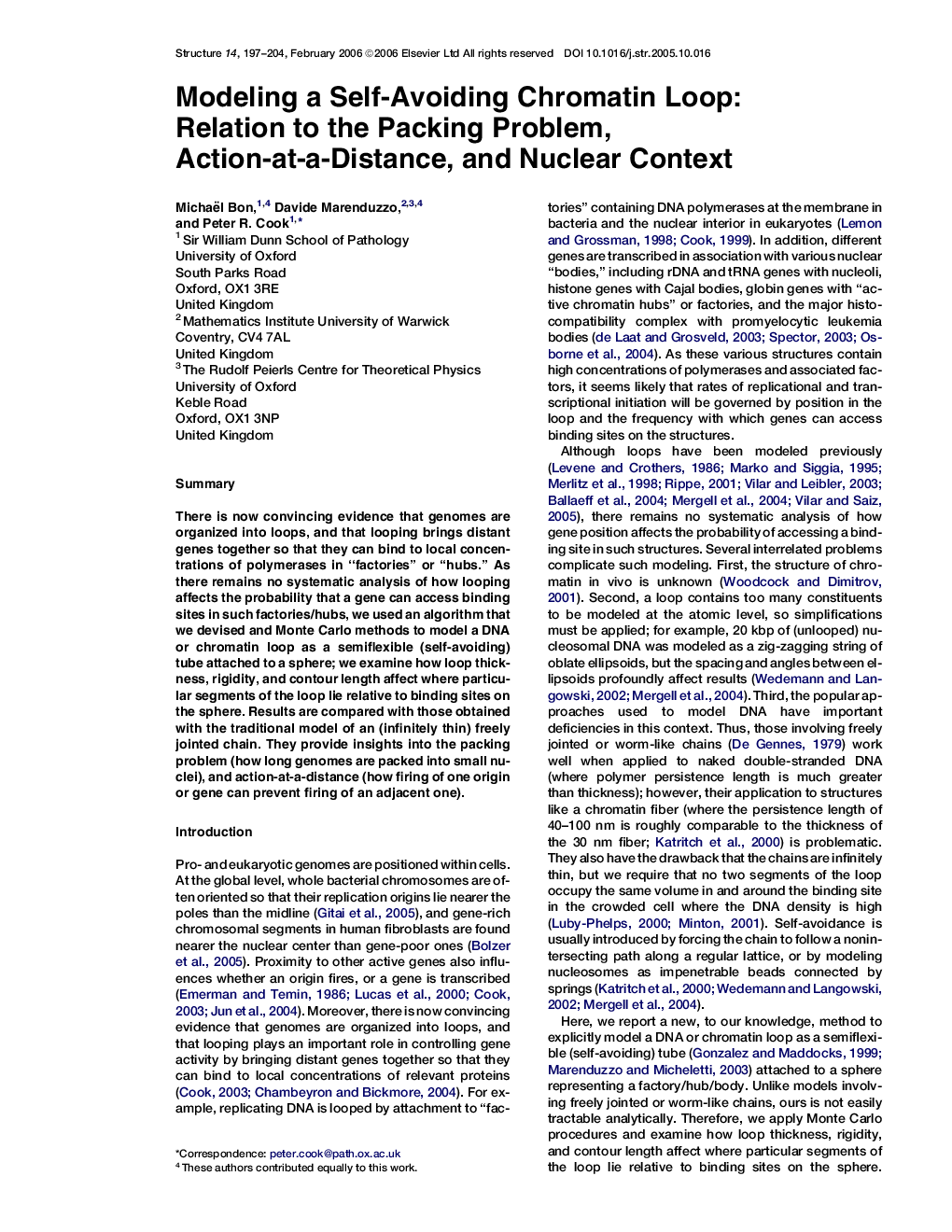| Article ID | Journal | Published Year | Pages | File Type |
|---|---|---|---|---|
| 2030137 | Structure | 2006 | 8 Pages |
SummaryThere is now convincing evidence that genomes are organized into loops, and that looping brings distant genes together so that they can bind to local concentrations of polymerases in “factories” or “hubs.” As there remains no systematic analysis of how looping affects the probability that a gene can access binding sites in such factories/hubs, we used an algorithm that we devised and Monte Carlo methods to model a DNA or chromatin loop as a semiflexible (self-avoiding) tube attached to a sphere; we examine how loop thickness, rigidity, and contour length affect where particular segments of the loop lie relative to binding sites on the sphere. Results are compared with those obtained with the traditional model of an (infinitely thin) freely jointed chain. They provide insights into the packing problem (how long genomes are packed into small nuclei), and action-at-a-distance (how firing of one origin or gene can prevent firing of an adjacent one).
